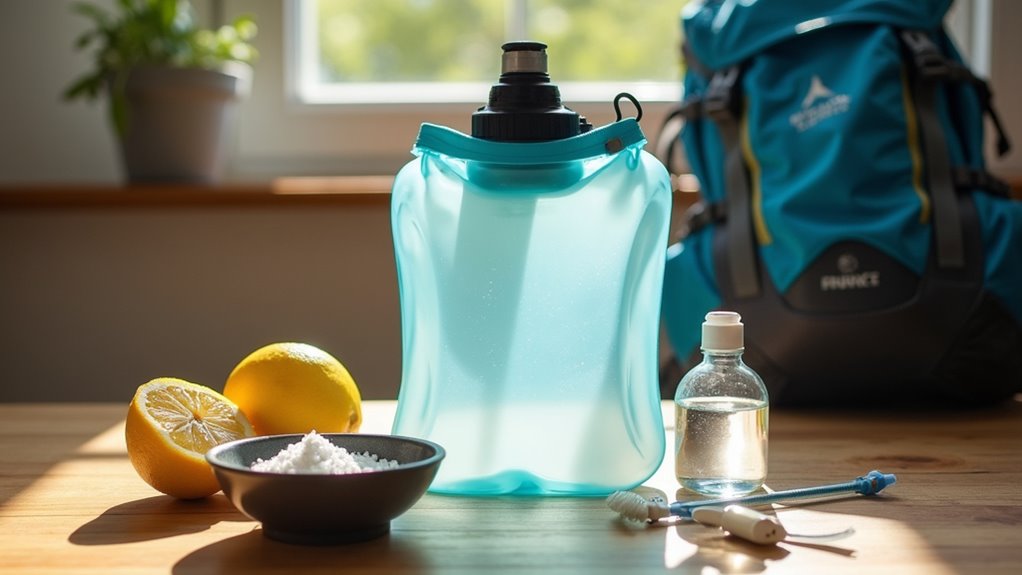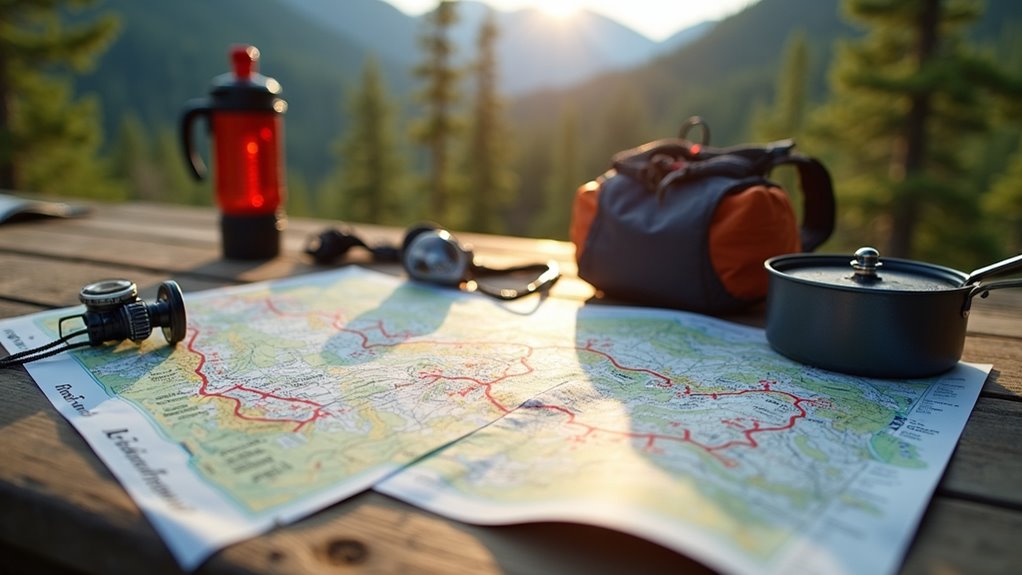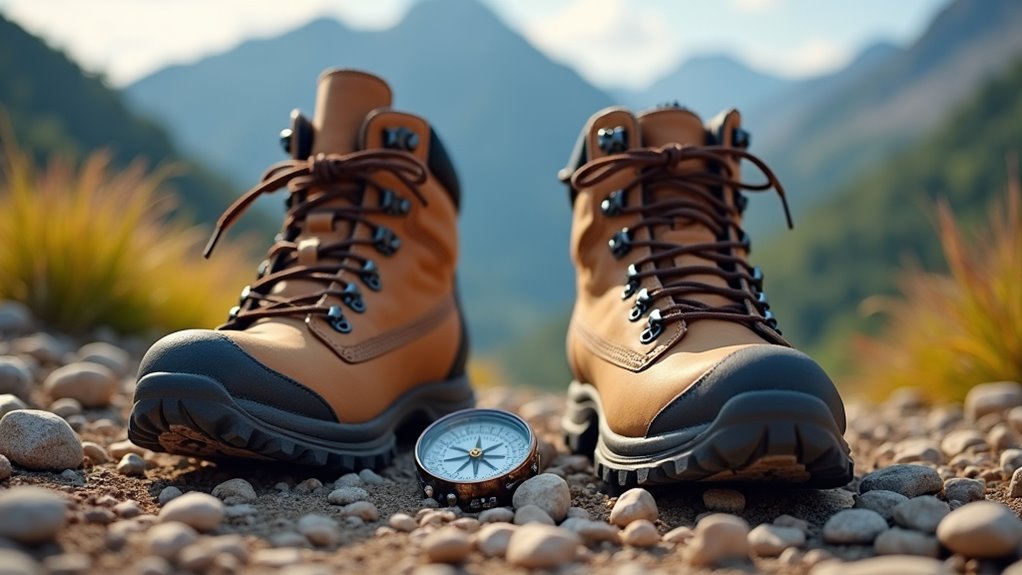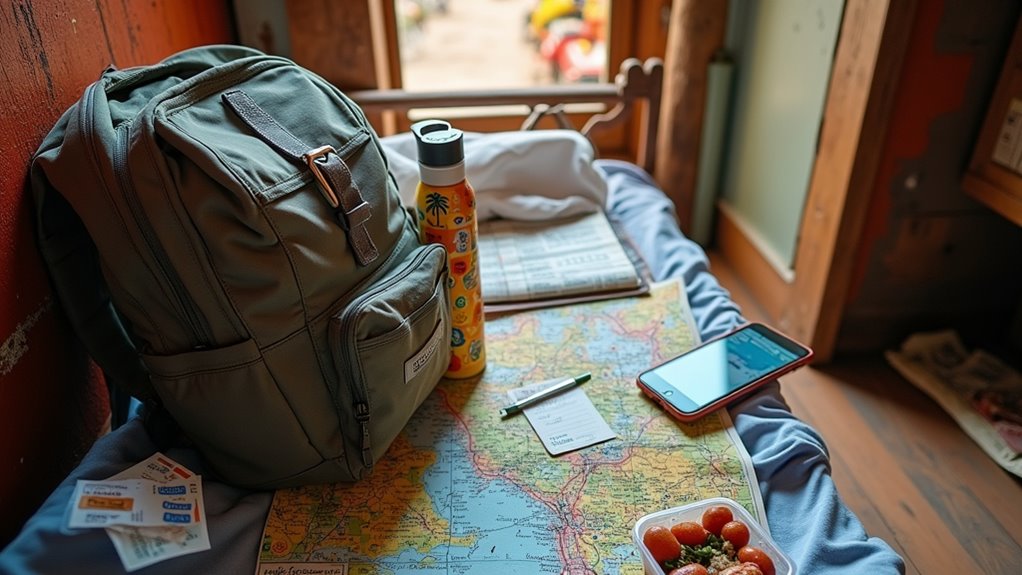To clean your water pack after backpacking, fill the reservoir with warm, soapy water, shake thoroughly, and flush the drink tube to reach every surface. Scrub with a soft brush or cloth, then rinse both the reservoir and tube with cool water to remove soap. Air dry the entire system, ideally with the tube elevated for airflow, and regularly check bite valves and accessories for residue. Simple natural cleaners can tackle odors. More specific cleaning plans await your attention ahead.
Whether you rely on a hydration system like CamelBak, Osprey, Platypus, or Gregory, keeping your water pack clean is crucial for safe and efficient use. After each backpacking adventure, you should clean your water reservoir to prevent mold and bacteria from developing, which can compromise both your health and the longevity of your gear.
Keeping your hydration pack clean after every trip is essential to protect both your health and the lifespan of your gear.
Start by gathering mild soap, warm water, and a soft brush or cloth. Never use boiling water, as high temperatures can deform or damage the reservoir materials. If your reservoir is compatible, dishwasher cleaning can be the most convenient method—just make sure to follow the manufacturer’s guidelines and place the bladder on the top shelf. Using effervescent denture-cleaning tablets is a simple and effective way to routinely clean your reservoir and prevent buildup.
To clean the reservoir, fill it with warm soapy water and shake it to guarantee the cleaning solution reaches every surface. Let some of the solution drain through the drink tube, making sure the interior is thoroughly flushed. Afterward, rinse the reservoir and tube with cool water, removing all soap residue. If you have a reservoir dryer, use it to hold the reservoir open for air circulation; otherwise, air dry completely before storing.
Accessories, including the bite valve, spout caps, and tethers, require similar attention. Clean the bite valve by pinching it and letting the cleaning solution flow through. Spout caps and valves are often dishwasher safe, but you can also hand wash them with soapy water.
Drink tubes need to be cleaned and rinsed as thoroughly as the reservoir, and you should never overlook these components since they’re prone to residue buildup.
For persistent odors, natural cleaners such as lemon juice, baking soda, or a vinegar-water mix are effective. Swish your chosen solution through the reservoir, allow it to sit for a few minutes, then rinse thoroughly. Exposing parts to direct sunlight and making sure they’re completely air dried helps further disinfect and prevents mold growth.
To minimize mold risk, guarantee airflow through all parts, store the pack with the drink tube elevated, and check for mold or residue regularly. Avoid bleach or machine washing, which can void warranties and damage components.
After cleaning, rinse completely, dry thoroughly, and store the reservoir hanging upside down or using a drying tool. Regular inspection preserves the water pack’s performance and safety for every trip.









